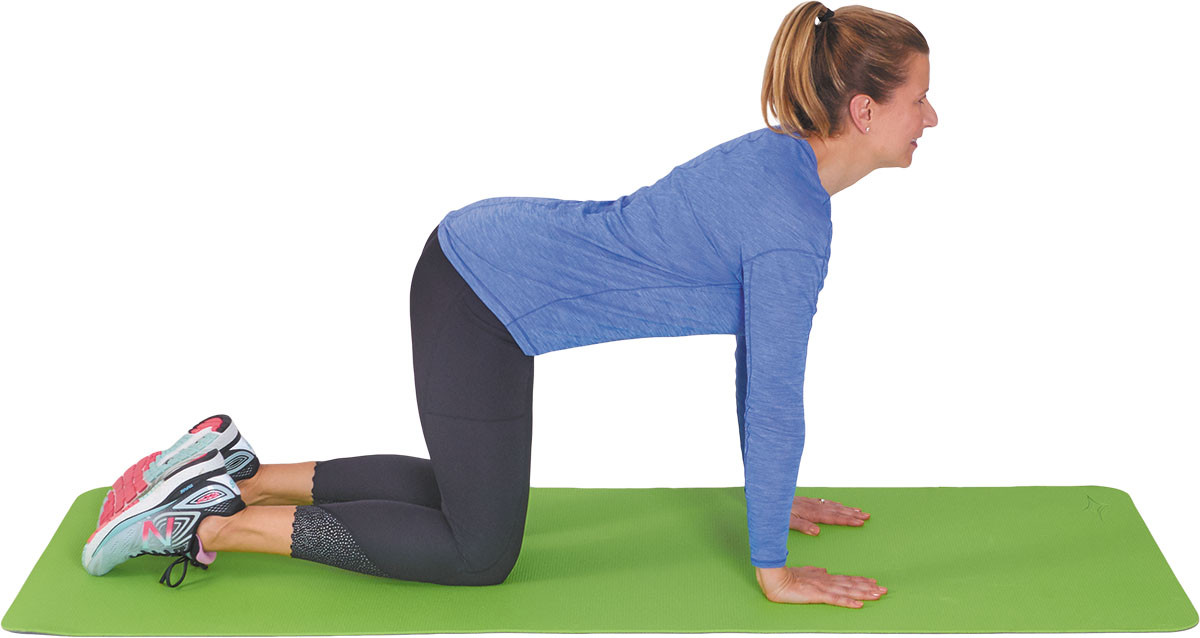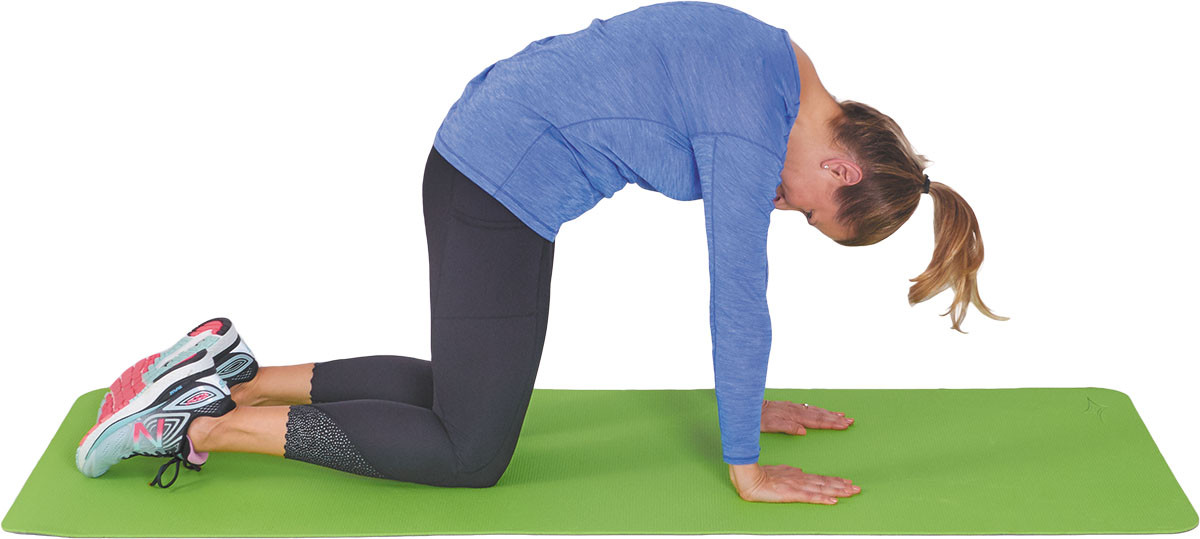Reduce or avoid back pain during these everyday activities
It takes a combination of quick fixes and long-term strategies. Here's what you can do.
- Reviewed by Anthony L. Komaroff, MD, Editor in Chief, Harvard Health Letter; Editorial Advisory Board Member, Harvard Health Publishing

There's never a good time for back pain to strike. But there are good strategies for coping with it. If you're among the millions of people struggling with back pain — eight out of 10 people experience it at some point in their lives, especially low back pain — you'll want to know what to do.
What causes back pain?
The spine is a strong and complex tower of bones (vertebrae) with many parts that are prone to irritation, injury, or wear and tear. For example, joints that connect one vertebra to another can deteriorate (spondylosis); discs that act as cushions between vertebrae can become deformed (herniated), irritating nearby nerve roots; and the bones themselves can sprout little growths or spurs that jab into nerves (stenosis).
Move of the month: Cat-cowStrengthen and stretch the back with a "cat-cow" exercise.
Get down on all fours, with your hands directly beneath your shoulders and your knees beneath your hips. Inhale and lift your chest and tailbone toward the ceiling like a cow.
As you exhale, round your back, bringing your chin toward your chest and tucking your tailbone under like a cat. Repeat the exercise 10 times. Exercise photos by Thomas MacDonald |
Common scenarios and quick fixes
You may already know that you have a back problem, or you may discover it when you suddenly experience pain. What should you do in the moment? Consider the following scenarios and responses.
Driving a car. Sitting for long periods or in awkward positions puts pressure on your back.
Quick fixes: "Use a lumbar pillow to support your lower back. If you don't have a pillow, try using a water bottle wrapped in towel. And if you're sitting too far from the steering wheel, try moving it closer and see how you feel," says Mason Gray, a physical therapist at Harvard-affiliated Spaulding Rehabilitation Hospital. Other ways to relieve pain while driving: "If your vehicle has heated seats, turn them on as heat therapy, to reduce pain and relax muscles. Or pull over and take pressure off your back by walking around for a few minutes," Gray suggests.
Sitting at a desk. Like sitting in a car for a long time, sitting at a desk for prolonged periods can lead to back pain.
Quick fixes: "Try to move every hour," Gray says. "Go get a drink of water or stand up and stretch." He also recommends using a lumbar pillow to support your lower back, using heat or cold, or switching to a standing desk for a little while (or simply working at a bar-height countertop — again, just for a little while, to get you out of a seated position).
Shopping. You might think walking around a mall is mostly hard on your feet, but it can also cause a sore back.
Quick fixes: "It could be that you're carrying a heavy shopping bag or handbag on one side of your body, which puts an uneven load on that side for long periods," Gray says. He recommends carrying bags on both sides of your body, not just one, to distribute the weight. If you carry a handbag, remove some of its contents before you go out, so you'll lighten the load.
Exercising. Lifting weights is a great way to build a strong and healthy back, but if you aren't mindful of your form and technique, you can set yourself up for back pain.
Quick fixes: If you experience pain while exercising, Gray says you shouldn't push through the discomfort. "Stop what you're doing and evaluate what's causing your back pain," he says. "Are you using more weight than you can handle? Consider reducing the weight. If you can't modify your way out of pain with an exercise, your best move may be skipping it for that day."
Lifting something heavy. When lifting a heavy load — whether it's a grocery bag, a laundry basket, or a precious grandchild who runs into your arms — the sudden increase in pressure on your back can irritate the back's joints, discs, muscles, and nerves.
Quick fixes: Put down your heavy load immediately, so you don't injure your back. Try lifting the load again with the right technique: get as close to the object as you can, and bend your knees a little. Wrap your arms around the object, push down with your legs, and stand up straight. To carry the object, keep it close to your chest.
Lying in bed. Sometimes back pain occurs while you're simply lying in bed.
Quick fixes: Maybe your sleep position is putting pressure on your back. "If you're a back sleeper, try putting a pillow under your knees to distribute pressure a little better," Gray suggests. "If you're a side sleeper, put a pillow between your knees or use a very long, narrow 'body' pillow and put your arm over it."
Will TENS therapy ease your back pain?Transcutaneous electrical nerve stimulation (TENS) therapy uses low-level electrical current (tiny shocks) on the skin to interrupt pain signals. While some people swear by it, it doesn't work for everyone, and studies about its effectiveness for low back pain have produced mixed results. Some medical organizations, such as the American Academy of Neurology and the American College of Physicians, do not endorse TENS for chronic back pain. Still, TENS therapy is a low-risk option that doctors often recommend. You can see a physical therapist for TENS therapy, or you can get a home TENS unit (ask your doctor or physical therapist about the voltage that's safe for your condition). Prices for a home TENS unit start at about $25. |
Long-term fixes
Easing back pain when it strikes is important, but it's not a permanent solution. If back pain lasts more than a week, see your doctor for an evaluation. If you need treatment, the first line of defense will most likely be exercise and strengthening regimens — two keys to staving off an aching back.
Other long-term fixes include always using a lumbar pillow when sitting (not just when you're in pain); getting a new bed topper or a new mattress if you feel your bed is contributing to back problems; and sitting up straighter at your desk, with your knees at a 90° angle.
Managing chronic stress may also help ease your discomfort. "People who have a lot of stress are more likely to have back pain," Gray says. "Managing stress with exercise, meditation, a healthy diet, and better sleep may be one of your secret weapons to keep your back from bothering you."
Image: © SolStock/Getty Images
About the Author

Heidi Godman, Executive Editor, Harvard Health Letter
About the Reviewer

Anthony L. Komaroff, MD, Editor in Chief, Harvard Health Letter; Editorial Advisory Board Member, Harvard Health Publishing
Disclaimer:
As a service to our readers, Harvard Health Publishing provides access to our library of archived content. Please note the date of last review or update on all articles.
No content on this site, regardless of date, should ever be used as a substitute for direct medical advice from your doctor or other qualified clinician.


















